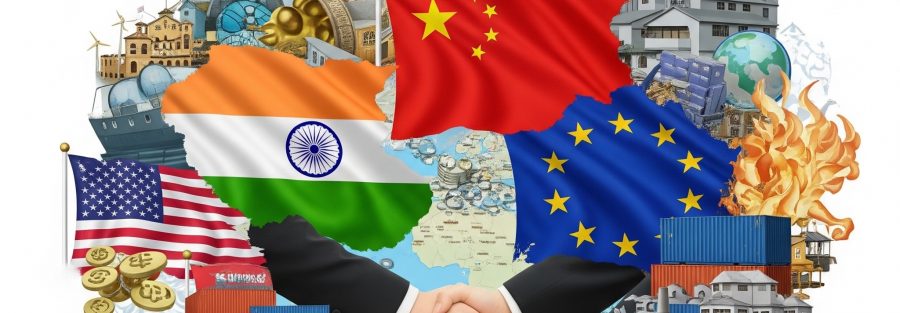Washington D.C. – A sense of anticipation and anxiety is rippling through global markets as the world braces for a significant potential shift in international trade. On July 9th, 2025, a 90-day pause on a series of sweeping “reciprocal tariffs” threatened by the Trump administration is set to expire. Unless last-minute deals are struck, a new era of heightened trade barriers could be upon us, with significant implications for the world economy, including major players like the European Union, China, and India.
What to Expect: The “Reciprocal Tariff” Doctrine
At the heart of the matter is President Donald Trump’s “reciprocal tariff” policy. The administration has argued that for decades, the United States has been subjected to unfair trade practices, with other countries imposing high tariffs on American goods while the U.S. maintained relatively low barriers. The proposed solution: a baseline 10% tariff on most imports, with additional “reciprocal” tariffs ranging from 11% to a staggering 50% on countries that the U.S. deems have imbalanced trade relationships.
This aggressive stance has already led to a series of tense negotiations with key trading partners. The July 9th deadline marks the culmination of a “grace period” for these nations to renegotiate their trade terms with the United States. Failure to reach an agreement could trigger the automatic implementation of these steep tariffs, potentially disrupting supply chains, increasing consumer prices, and sparking retaliatory measures.
The European Union is staring down the barrel of significant tariff hikes on its exports, while the already fraught trade relationship with China could face another major escalation. For businesses and consumers worldwide, this could translate to higher costs for a wide range of goods, from automobiles to electronics and everyday consumer products.
What Can Be Done? A Flurry of High-Stakes Negotiations
The past few weeks have witnessed a flurry of diplomatic activity as countries scramble to avert the impending tariffs. High-level delegations have been shuttling to and from Washington, engaged in intense, down-to-the-wire negotiations. The primary objective for these nations is to secure a trade deal, or at the very least an extension of the current pause, to avoid the economic shock of the new tariffs.
For the Trump administration, the goal is to secure what it deems to be “fair and reciprocal” trade agreements that prioritize American industries and workers. This has led to tough demands for increased market access for U.S. goods and a reduction in trade deficits.
The coming days will be critical. The world will be watching closely for any signs of breakthroughs or breakdowns in these talks. The success or failure of these last-minute negotiations will determine the immediate future of global trade.
India’s High-Stakes Tightrope Walk
For India, the stakes in this unfolding trade drama are particularly high. The South Asian giant faces the prospect of a 26% reciprocal tariff on its exports to the United States, its largest trading partner. Such a move would deal a significant blow to Indian industries, particularly in labor-intensive sectors like textiles, gems, and jewelry, which are crucial for employment.
In response, India has been engaged in critical trade negotiations with the U.S. The White House has hinted that a trade deal with India could be announced “very soon,” offering a glimmer of hope that a crisis can be averted. Reports even suggest that an interim trade agreement might be finalized this week, providing a temporary reprieve and a framework for a more comprehensive deal.
However, significant hurdles remain. The United States is pushing for greater access to the Indian market for its agricultural products, a politically sensitive issue in India where the livelihoods of millions of farmers are at stake. On the other hand, India is seeking concessions for its key export sectors.
The path forward for India is a delicate balancing act. It must protect its economic interests and the welfare of its citizens while navigating the demands of a key strategic and economic partner. The outcome of these negotiations will not only impact India’s economic trajectory but also shape the future of the U.S.-India trade relationship.
As the July 9th deadline looms, the world holds its breath. The decisions made in the coming days in Washington and in capitals around the globe will have far-reaching consequences, setting the course for international trade in the years to come.
#DonaldTrump #Tariffs #TradeWar #USTrade #GlobalTrade #EconomicPolicy #July9Deadline #ReciprocalTariffs #USChinaTrade #USEUTrade #USIndiaTrade #IndiaUSA #TradeNegotiations #MakeInIndia #EconomicNews #InternationalRelations #Politics #BusinessNews #ImportExport #WorldEconomy















































